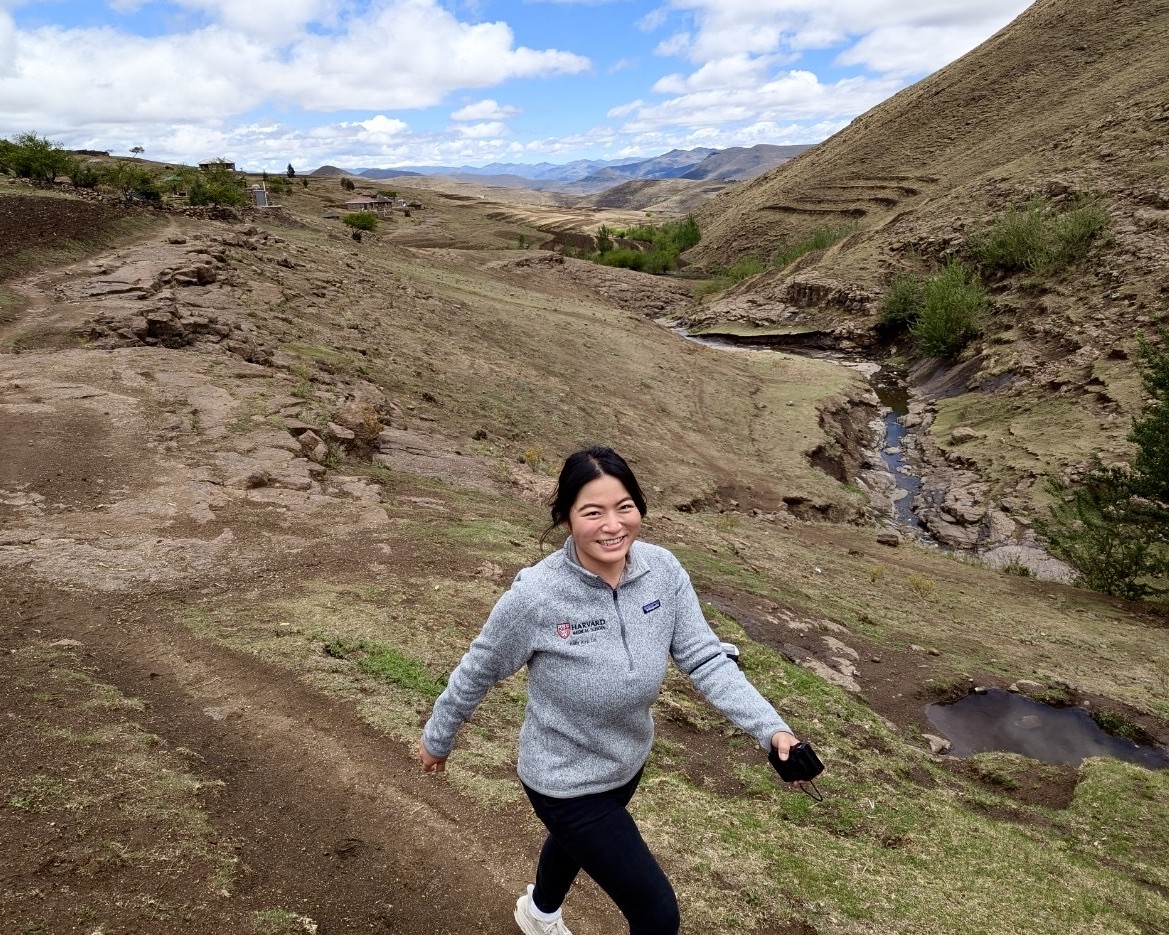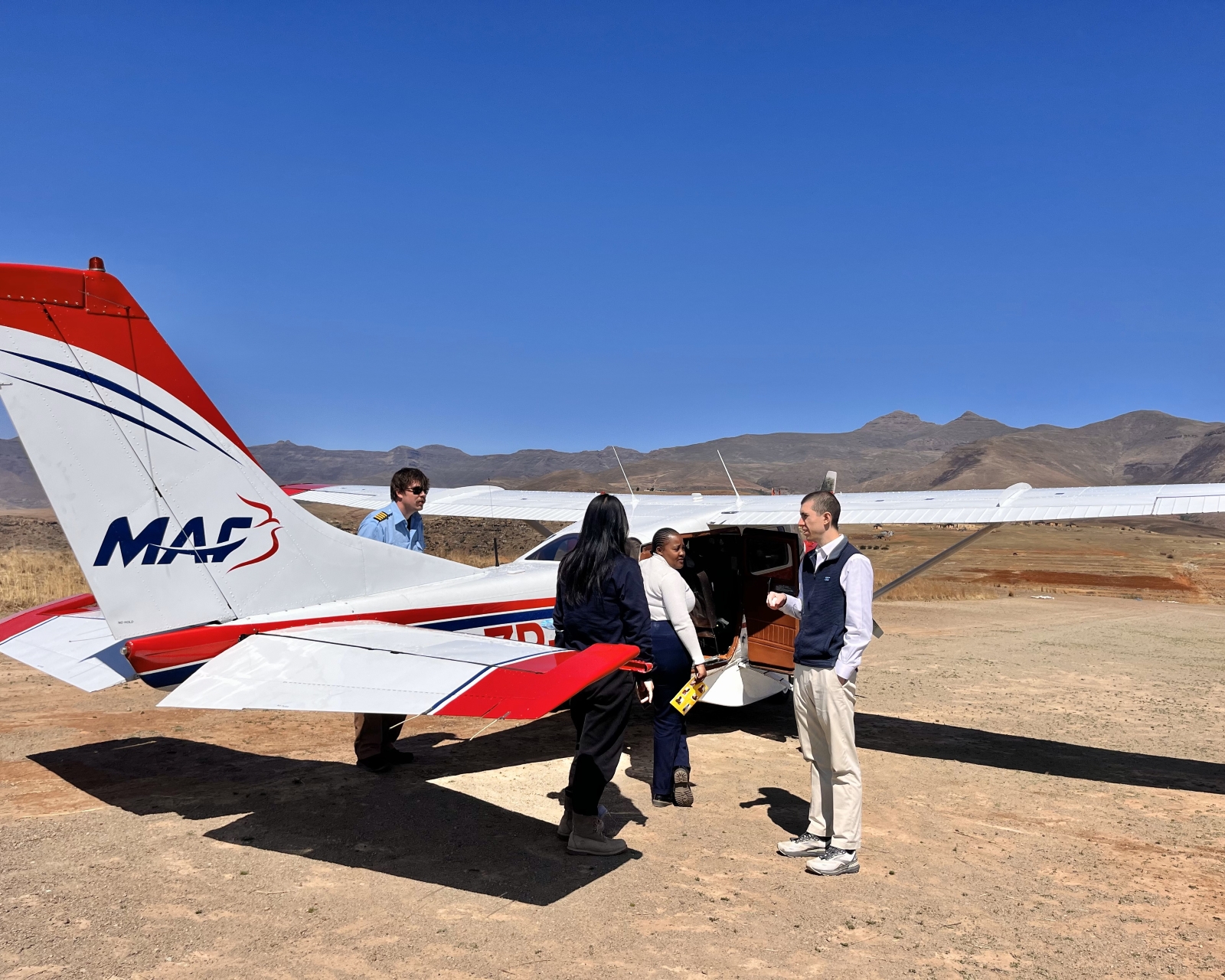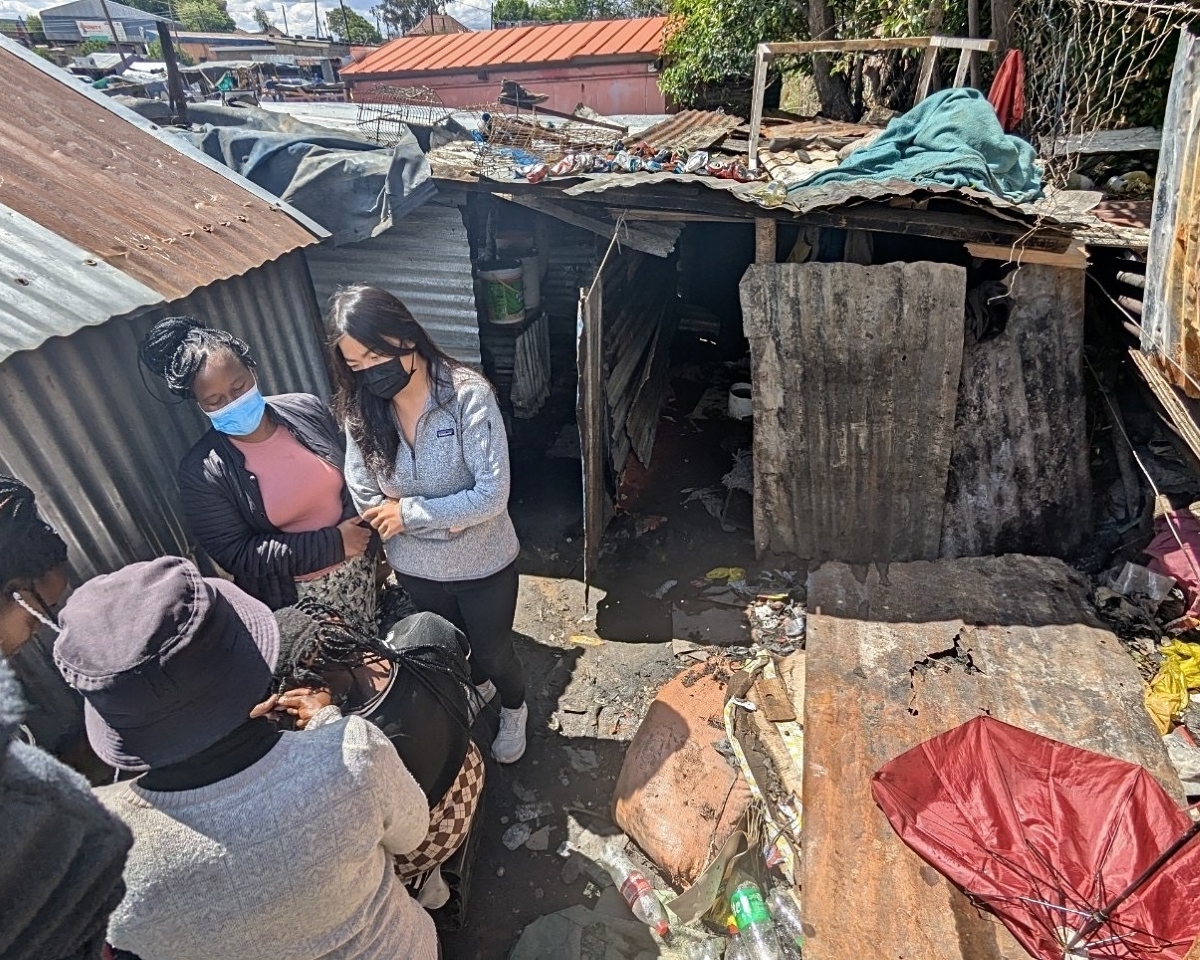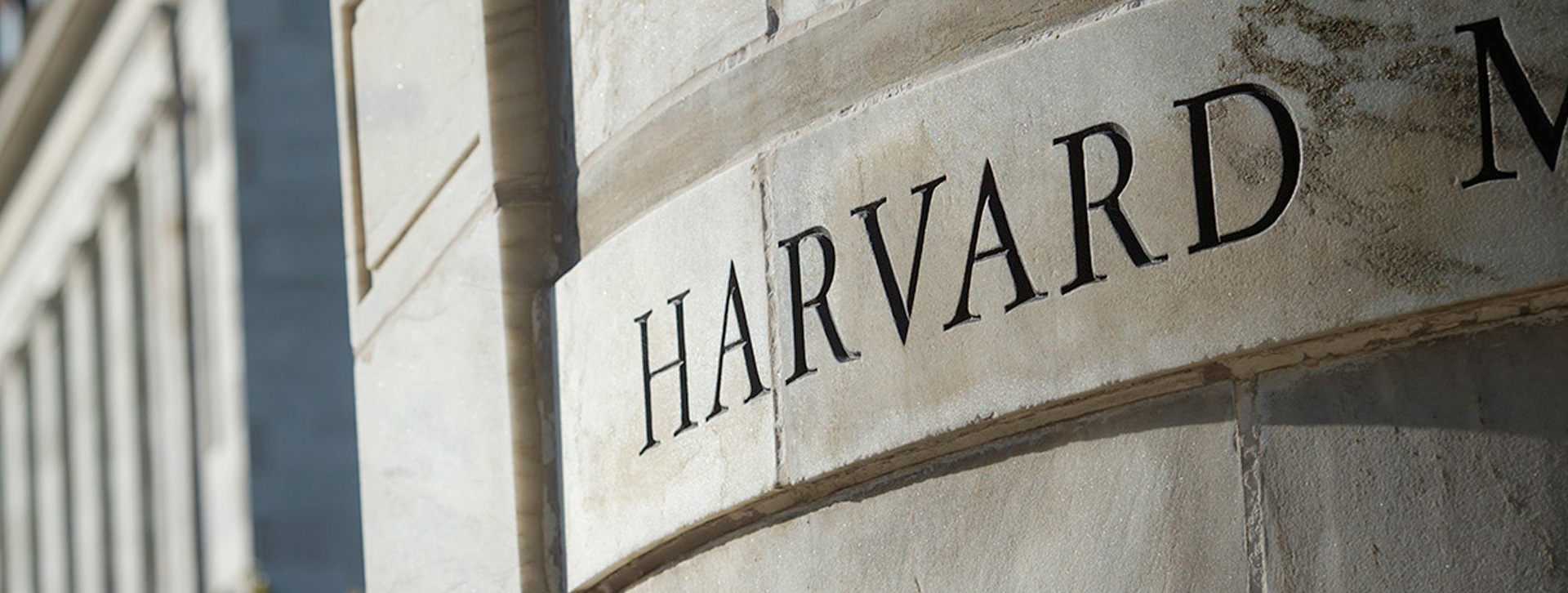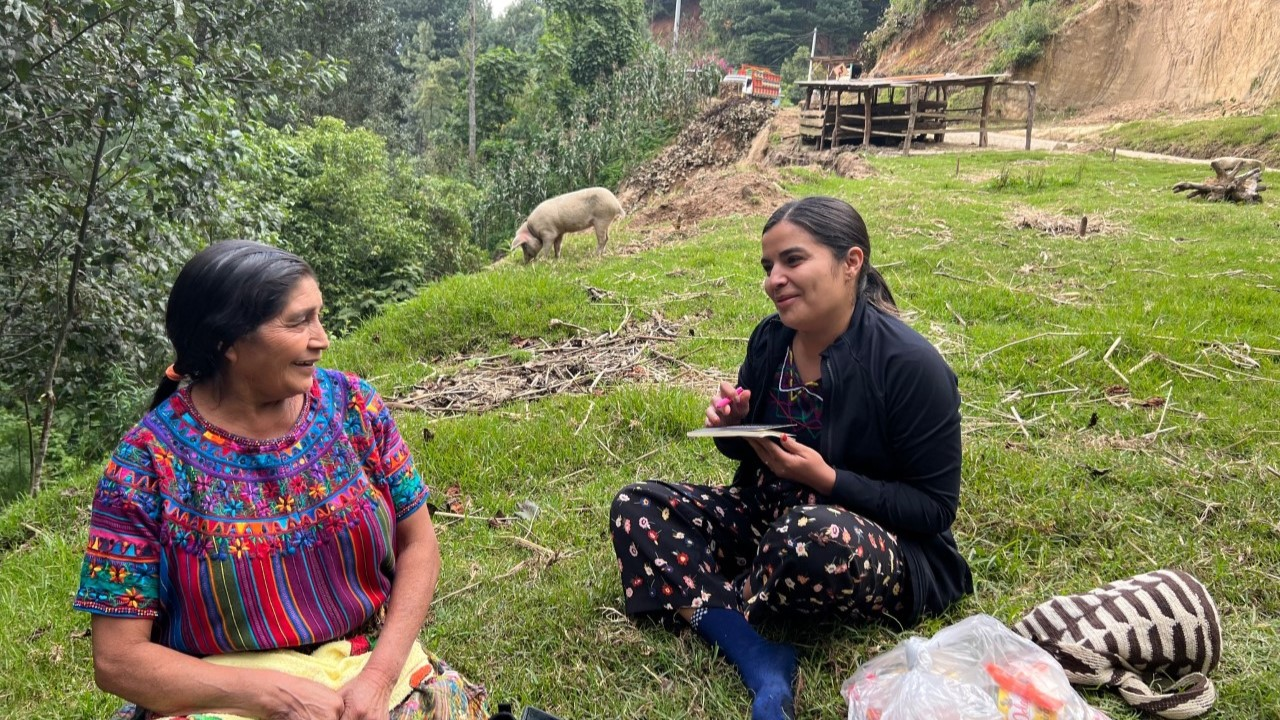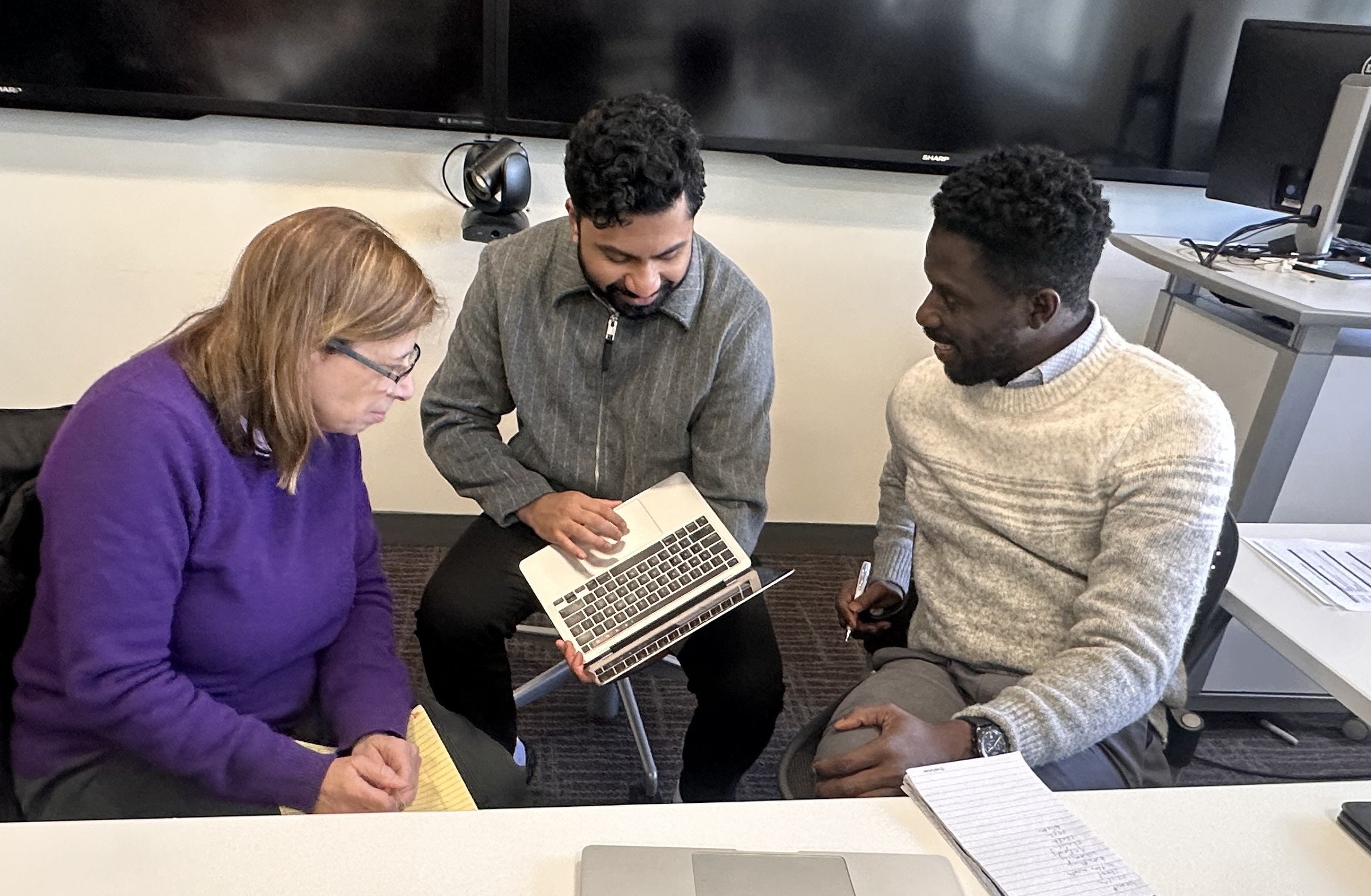Kelly Lai spent several months in Lesotho conducting deeply immersive fieldwork on post-tuberculosis (TB) care. Hosted by Partners In Health Lesotho (PIH-L), her project explores how patients with post-TB lung disease (PTLD) navigate care across clinical and community settings and what can be done to support them more effectively.
Kelly’s field site was based at Botshabelo Hospital, a national referral center supported by PIH-L that maintains patient records across the country. From this hub, she and her local research assistants reached participants in districts as remote as Mafeteng and Berea, conducting interviews everywhere from hospital wards to mountaintop villages and even inside rented spaces such as local bars.
One of the most striking early insights from Kelly’s interviews is how frequently the conversation turns to silicosis. Both mineworkers and healthcare professionals speak about it as a primary factor in the TB epidemic, especially among those with prolonged exposure to mines in South Africa. These voices prompted Kelly’s team to revisit the scope of the study and find ways to thoughtfully incorporate silicosis into their data collection and analysis.
Throughout her fieldwork, Kelly has paid close attention to the relationship between geography and care. Many participants live hours, sometimes days, away from the nearest clinic, navigating a fragmented transportation system and rugged terrain. In the highlands, the research team mirrors patients’ journeys by hiking steep paths or crossing rivers by boat to reach their homes. One participant’s home was an eight-hour walk from the nearest health facility. In these settings, accessing care is an endurance test and an urgent reminder that proximity and mobility remain serious equity issues in global health delivery.
Kelly’s work was deeply ethnographic. Her team regularly visited participants’ homes and workplaces to better understand the rhythms of life after TB. At one bus stop shop in town, a participant who had received rare post-TB care became a key informant, sharing not only his personal journey but also insights that may inform future care models. In rural areas, Kelly’s role as observer and listener brought her into contact with children eager to share their language, caregivers charging oxygen concentrators at local shops, and patients managing breathlessness in silence.
Over the months, another theme emerged with increasing urgency: mental health. Kelly and her team began to notice symptoms of depression not only among participants but also among local colleagues and friends. Their observations were later echoed by health workers, who shared concerns about the country’s scarce mental health infrastructure. With no psychiatrists in Lesotho, the responsibility for mental health care falls on overburdened nurses, counselors, and general practitioners. Kelly reflected on the complex interplay of poverty, disconnection, and limited long-term prospects as contributing factors to the widespread sense of hopelessness many describe.
In grappling with these questions, Kelly engaged with staff at rural clinics, humanitarian pilots, and fellow researchers. While she remains attentive to the critiques of aid and power dynamics in global health, she recognized the irreplaceable, tangible value of cooperation and practical support, especially when it enables a patient in the mountains to access a lifesaving x-ray or medication delivery.
Through this work, Kelly has remained grounded in a core principle of Partners In Health: “Whatever it takes.” Her fieldwork not only expanded our understanding of post-TB care in Lesotho, but also asked deeper questions about equity, endurance, and what it means to deliver health services where the terrain—literal and social—is full of obstacles. As she put it after one long hike to reach a participant’s home: “Ten thousand scrolls are no better than ten thousand miles.”
